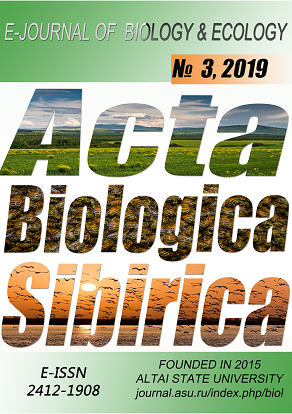Аннотация
Разновидность Limodorum abortivum var. viride известна из пяти локалитетов Южного берега Крыма. Все они представлены сообществами Quercus pubescens, в то время как L. abortivum var. abortivum произрастает в разных типах лесов. Limodorum abortivum var. viride отличается от номинативной разновидности более коротким, более тонким и полностью зеленым цветоносным стеблем и несколько меньшим размером цветков. В то же время, отличия по признаку густоты соцветия не подтверждены t-критерием Стьюдента. Данная разновидность сходна с описанной из Греции L. abortivum var. gracile по морфологическим параметрам и местообитанию. Однако L. abortivum var. gracile отличается от Limodorum abortivum var. viride почти белыми цветками. Предполагается, что обе разновидности сходны по причине происхождения в сходных условиях.
Литература
Claessens, J., Kleynen, J. (2011). The flower of the European orchid. Form and function. Voerendaal & Stein: Jean Claessens & Jacques Kleynen.
Delforge, P. (2016). Orchidées d’Europe, d’Afrique du Nord et du Proche-Orient, 4me éd. Paris: Delachaux et Nistlé.
Fateryga, A.V., Kreutz, C.A.J. (2014). Checklist of the orchids of the Crimea (Orchidaceae). Journal Europäischer Orchideen, 46(2), 407–436.
Govaerts, R., Bernet, P., Kratochvil, K., Gerlach, G., Carr, G., Alrich, P., Pridgeon, A.M., Pfahl, J., Campacci, M.A., Holland Baptista, D., Tigges, H., Shaw, J., Cribb, P., George, A., Kreu[t]z, K., Wood, J. (2005–2019). World Checklist of Orchidaceae. Royal Botanic Gardens, Kew. Available at: http://apps.kew.org/wcsp/ (accessed 21 January 2019).
Kreutz, C.A.J. (2004). Kompendium der europäischen Orchideen / Catalogue of European orchids. Landgraaf: Kreutz Publishers.
Kreutz, C.A.J., Fateryga, A.V., Ivanov, S.P. (2018). Orchids of the Crimea. Sint Geertruid: Kreutz Publishers.
Lakin, G.F. (1990). Biometriya. Moscow: Vysshaya Skola (in Russian).
Litvinskaya, S.A. (2008). Limodorum nedorazvityy. Krasnaya kniga Rossiyskoy Federatsii (rasteniya i griby). Mocsow: KMK Scientific Press Ltd (in Russian).
Plantarium: open on-line atlas and key to plants and lichens of Russia and neighbouring countries. (2007–2019). Available at: http://www.plantarium.ru/ (accessed 21 January 2019).
Priority-setting in conservation: A new approach for Crimea (1999). Washington: Biodiversity Support Program.
Vakhrameeva, M.G., Tatarenko, I.V., Varlygina, T.I., Torosyan, G.K., Zagulskii, M.N. (2008). Orchids of Russia and adjacent countries (within the borders of the former USSR). Ruggell: A.R.G. Gantner Verlag.
Willing, B., Willing, E. (1981). Orchideen-Notizen aus Arkadien, Süd-Griechenland. Die Orchidee, 32(4), 175–182.
Авторы, публикующиеся в данном журнале, соглашаются со следующими условиями:
a. Авторы сохраняют за собой права на авторство своей работы и предоставляют журналу право первой публикации этой работы с правом после публикации распространять работу на условиях лицензии Creative Commons Attribution License, которая позволяет другим лицам свободно распространять опубликованную работу с обязательной ссылокой на авторов оригинальной работы и оригинальную публикацию в этом журнале.
b. Авторы сохраняют право заключать отдельные договора на неэксклюзивное распространение работы в том виде, в котором она была опубликована этим журналом (например, размещать работу в электронном архиве учреждения или публиковать в составе монографии), с условием сохраниения ссылки на оригинальную публикацию в этом журнале. с. Политика журнала разрешает и поощряет размещение авторами в сети Интернет (например в институтском хранилище или на персональном сайте) рукописи работы как до ее подачи в редакцию, так и во время ее редакционной обработки, так как это способствует продуктивной научной дискуссии и положительно сказывается на оперативности и динамике цитирования статьи

